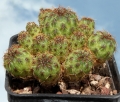Donate now to support the LLIFLE projects.
Your support is critical to our success.
Your support is critical to our success.
Weingartia tarabucoensis var. callecallensis
Gymnocalycium 21(2): 781. 2008 [May 2008]
Family: CACTACEAE
Gymnocalycium 21(2): 781. 2008 [May 2008]
Family: CACTACEAE
= Sulcorebutia callecallensis (F.H.Brandt) Pilbeam
Sulcorebutia & Weingartia, Collector's Guide 41 (1985), contrary to Art. 34.1(a) ICBN (1983)
Accepted Scientific Name: Rebutia canigueralii Cárdenas
Cact. Succ. J. (Los Angeles) 36: 26, figs. 1964
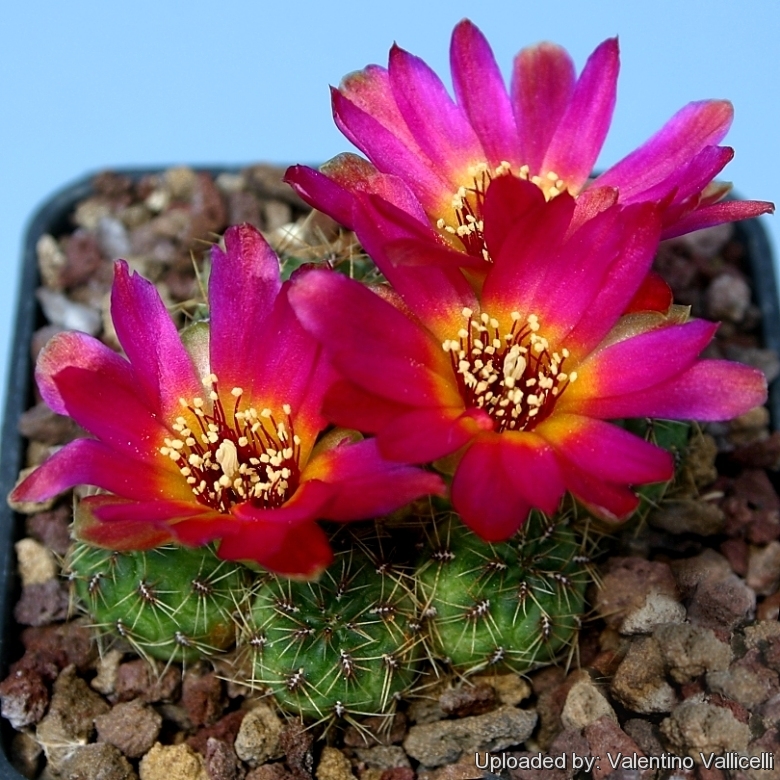
Weingartia tarabucoensis var. callecallensis (Sulcorebutia callecallensis) Photo by: Valentino Vallicelli
VZ196 (Collector: Johan de Vries, Elisabeth van Zomeren) Locality: East of VZ56b, Cerro Calle Calle, Zudanez, Bolivia Altitude: 2960m Date: Notes: red / orange flowers
VZ196 (Collector: Johan de Vries, Elisabeth van Zomeren) Locality: East of VZ56b, Cerro Calle Calle, Zudanez, Bolivia Altitude: 2960m Date: Notes: red / orange flowers
Synonyms:
- Sulcorebutia callecallensis (F.H.Brandt) Pilbeam
- Sulcorebutia tarabucoensis var. callecallensis (F.H.Brandt) K.Augustin & Gertel
- Weingartia callecallensis F.H.Brandt
- Weingartia tarabucoensis var. callecallensis (F.H.Brandt) Hentzschel & K.Augustin
See all synonyms of Rebutia canigueralii
back
Accepted name in llifle Database:Rebutia canigueralii Cárdenas
Cact. Succ. J. (Los Angeles) 36: 26, figs. 1964
Synonymy: 88
- Rebutia canigueralii Cárdenas
- Sulcorebutia canigueralii (Cárdenas) Buining & Donald
- Weingartia canigueralii (Cárdenas) F.H.Brandt
- Rebutia caracarensis Cárdenas
- Sulcorebutia caracarensis (Cárdenas) Donald
- Weingartia caracarensis (Cárdenas) F.H.Brandt
- Rebutia inflexiseta Cárdenas
- Rebutia pulchra Cárdenas
- Rebutia canigueralii subs. pulchra (Cárdenas) Donald ex D.R.Hunt
- Sulcorebutia pulchra (Cárdenas) Donald
- Weingartia pulchra (Cárdenas) F.H.Brandt
- Rebutia vasqueziana (Rausch) D.R.Hunt
- Sulcorebutia losenickyana var. vasqueziana (Rausch) K.Augustin & Gertel
- Sulcorebutia vasqueziana Rausch
- Weingartia vasqueziana (Rausch) Hentzschel & K.Augustin
- Sulcorebutia alba Rausch
- Sulcorebutia vasqueziana subs. alba (Rausch) Fritz & Gertel
- Weingartia alba (Rausch) F.H.Brandt
- Sulcorebutia albaoides (F.H.Brandt) Pilbeam
- Weingartia albaoides F.H.Brandt
- Sulcorebutia albaoides var. subfusca (F.H.Brandt) Pilbeam
- Sulcorebutia callecallensis (F.H.Brandt) Pilbeam
- Sulcorebutia tarabucoensis var. callecallensis (F.H.Brandt) K.Augustin & Gertel
- Weingartia callecallensis F.H.Brandt
- Weingartia tarabucoensis var. callecallensis (F.H.Brandt) Hentzschel & K.Augustin
- Sulcorebutia canigueralii var. applanata (Donald & Krahn) Horáček
- Sulcorebutia canigueralii f. applanata Krahn
- Sulcorebutia verticillacantha var. applanata Donald & Krahn
- Sulcorebutia croceareolata (F.H.Brandt) Pilbeam
- Weingartia croceareolata F.H.Brandt
- Sulcorebutia fischeriana K.Augustin
- Weingartia fischeriana (K.Augustin) Hentzschel & K.Augustin
- Sulcorebutia frankiana Rausch
- Weingartia frankiana (Rausch) F.H.Brandt
- Sulcorebutia frankiana var. aureispina Rausch
- Weingartia aureispina (Rausch) F.H.Brandt
- Sulcorebutia inflexiseta (Cárdenas) Donald
- Weingartia inflexiseta (Cárdenas) F.H.Brandt
- Sulcorebutia losenickyana Rausch
- Sulcorebutia vasqueziana subs. losenickyana (Rausch) Gertel & Šída
- Sulcorebutia vasqueziana var. losenickyana (Rausch) Šída
- Sulcorebutia verticillicantha var. losenickyana (Rausch) Oeser
- Weingartia losenickyana (Rausch) F.H.Brandt
- Weingartia vasqueziana var. losenickyana (Rausch) Hentzschel & K.Augustin
- Sulcorebutia pasopayana (F.H.Brandt) Gertel
- Weingartia pasopayana F.H.Brandt
- Sulcorebutia perplexiflora (F.H.Brandt) Pilbeam
- Weingartia perplexiflora F.H.Brandt
- Sulcorebutia rauschii G.Frank
- Rebutia rauschii (G.Frank) D.R.Hunt
- Sulcorebutia tarabucoensis subs. rauschii (G.Frank) Halda & Malina
- Weingartia rauschii (G.Frank) F.H.Brandt
- Sulcorebutia rauschii f. aureispina hort.
- Sulcorebutia rauschii f. cristata hort.
- Sulcorebutia rauschii f. violacidermis hort.
- Sulcorebutia rauschii f. viridermis hort.
- Rebutia canigueralii subs. rauschii f. viridis hort.
- Sulcorebutia rauschii f. viridis hort.
- Sulcorebutia rauschii cv. Apple Green
- Sulcorebutia rauschii cv. Esmeralda
- Sulcorebutia rauschii cv. Green Form hort.
- Weingartia rauschii f. virididermis hort.
- Sulcorebutia rubroaurea (F.H.Brandt) Pilbeam
- Weingartia rubro-aurea F.H.Brandt
- Sulcorebutia tarabucoensis Rausch
- Weingartia tarabucoensis (Rausch) F.H.Brandt
- Sulcorebutia tarabucoensis var. aureiflora (Rausch) K.Augustin & Gertel
- Sulcorebutia tarabucoensis subs. aureiflora (Rausch) Horáček
- Sulcorebutia verticillacantha var. aureiflora Rausch
- Weingartia tarabucoensis var. aureiflora (Rausch) Hentzschel & K.Augustin
- Sulcorebutia verticillacantha var. albispina (Rausch) Pilbeam
- Sulcorebutia losenickyana var. albispina (Rausch) Slaba
- Sulcorebutia vasqueziana var. albispina Rausch
- Weingartia saxatilis F.H.Brandt
- Sulcorebutia verticillacantha f. brevispina (F.H.Brandt) Pilbeam
- Sulcorebutia brevispina (F.H.Brandt) Pilbeam
- Weingartia brevispina F.H.Brandt
- Sulcorebutia verticillacantha var. ritteri (F.H.Brandt) Donald & Krahn
- Sulcorebutia ritteri (F.H.Brandt) F.Ritter
- Weingartia ritteri F.H.Brandt
- Sulcorebutia zavaletae (Cárdenas) Backeb.
- Aylostera zavaletae Cárdenas
- Weingartia zavaletae (Cárdenas) F.H.Brandt
- Weingartia tarabucina F.H.Brandt
Rebutia canigueralii subs. crispata (Rausch) Donald ex D.R.Hunt
Cactaceae Consensus Init. 3: 6. 1997
Synonymy: 24
- Rebutia canigueralii subs. crispata (Rausch) Donald ex D.R.Hunt
- Sulcorebutia crispata Rausch
- Weingartia crispata (Rausch) F.H.Brandt
- Sulcorebutia crispata var. senilis f. pectinata Horáček
- Sulcorebutia gerosenilis ?íha & Arandia
- Sulcorebutia crispata f. gerosenilis (Říha & Arandia)
- Sulcorebutia hertusii (Halda & Horáček) Halda & Horáček
- Sulcorebutia crispata subs. hertusii Halda & Horáček
- Sulcorebutia gerocephala hort.
- Sulcorebutia hertusii (Halda & Horáček) Halda & Horáček
- Sulcorebutia tarabucoensis var. hertusii (Halda & Horáček) Gertel & Wahl
- Sulcorebutia tarabucoensis var. senilis hort. sensu Kníže & Fritz, Gertel, J.de Vries
- Weingartia crispata var. hertusii (Halda & Horáček) Hentzschel & K.Augustin
- Sulcorebutia hertusii subs. aureicapillata (Halda, Heřtus & Horáček) Halda, Heřtus & Horáček
- Sulcorebutia crispata subs. aureicapillata Halda, Heřtus & Horáček
- Sulcorebutia roberto-vasquezii Diers & Krahn
- Weingartia roberto-vasquezii (Diers & Krahn) Hentzschel & K.Augustin
- Sulcorebutia senilis Kníže
- Sulcorebutia crispata var. senilis hort. sensu Kníže & E.F.Anderson
- Sulcorebutia tarabucoensis subs. patriciae B.Bates, Halda, Heřtus & Horáček
- Sulcorebutia gerosenilis var. patricii hort.
- Sulcorebutia patriciae hort.
- Sulcorebutia patricii
- Sulcorebutia tarabucoensis var. patriciae (B.Bates, Halda, Heřtus & Horáček)
back

Weingartia tarabucoensis var. callecallensis (Sulcorebutia callecallensis) Photo by: Carolina González

Weingartia tarabucoensis var. callecallensis (Sulcorebutia callecallensis) Photo by: Cactus Art
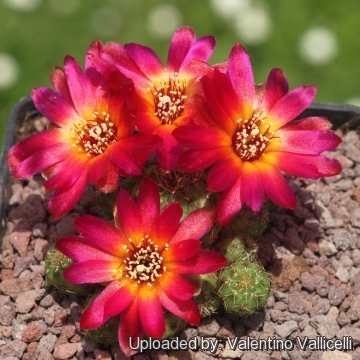
Weingartia tarabucoensis var. callecallensis (Sulcorebutia callecallensis) Photo by: Valentino Vallicelli
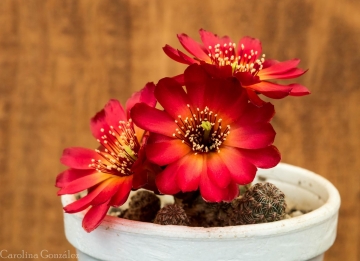
Weingartia tarabucoensis var. callecallensis (Sulcorebutia callecallensis) Photo by: Carolina González
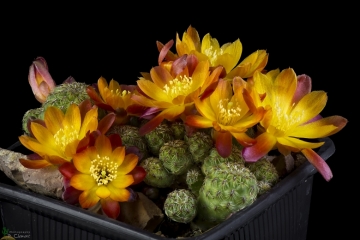
Sulcorebutia callecallensis HS 5 Sucre to Ravelo km 13.5, Oropeza, Chuquisaca, Bolivia (Sulcorebutia callecallensis) Photo by: Peiffer Clement
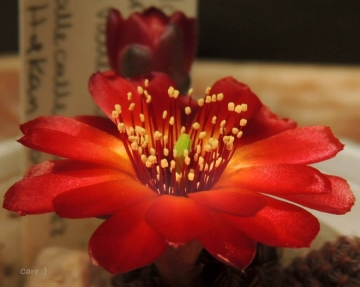
Weingartia tarabucoensis var. callecallensis (Sulcorebutia callecallensis) Photo by: Carolina González
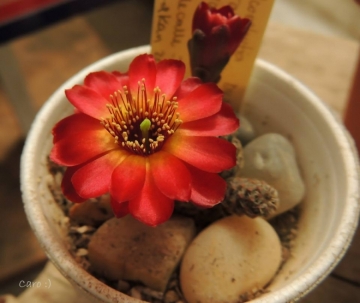
Weingartia tarabucoensis var. callecallensis (Sulcorebutia callecallensis) Photo by: Carolina González
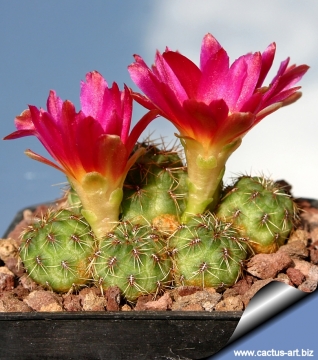
Weingartia tarabucoensis var. callecallensis (Sulcorebutia callecallensis) Photo by: Cactus Art
| Your Actions | |
|---|---|
| Back to Weingartia index | |
| Back to Cactaceae index | |
 |
Back to Cacti Encyclopedia index |









